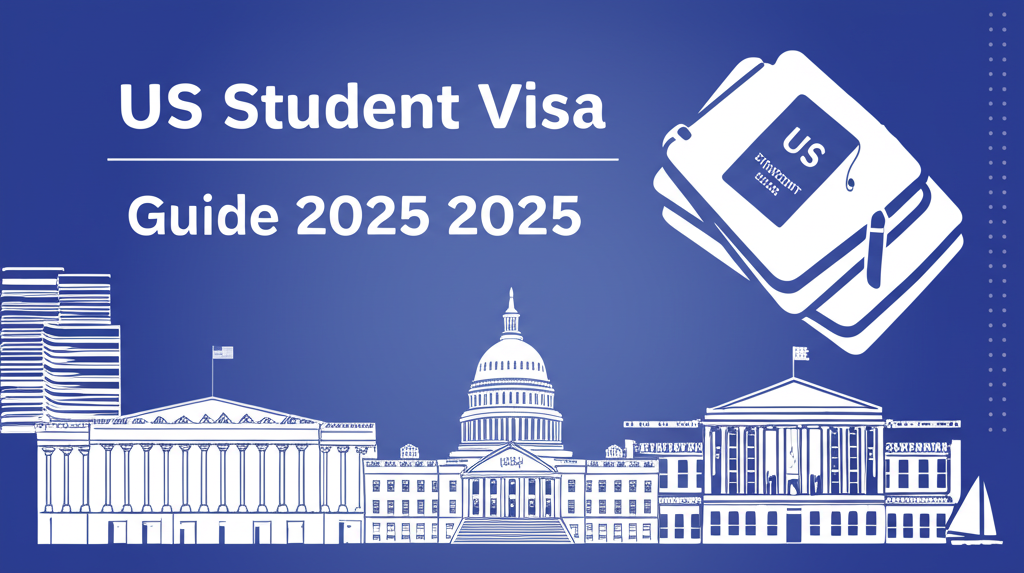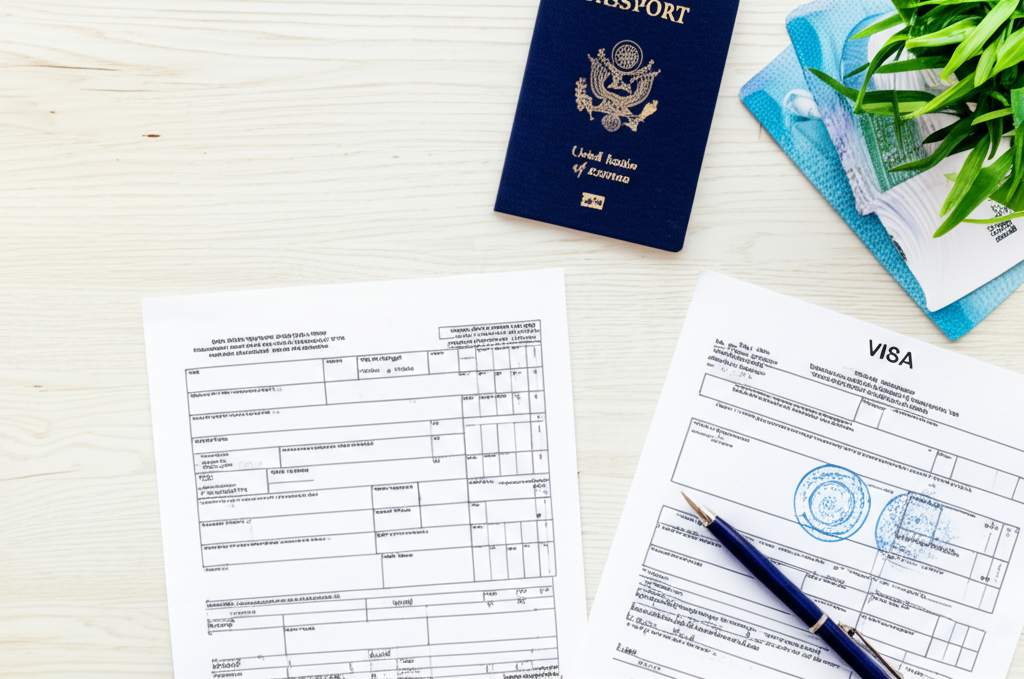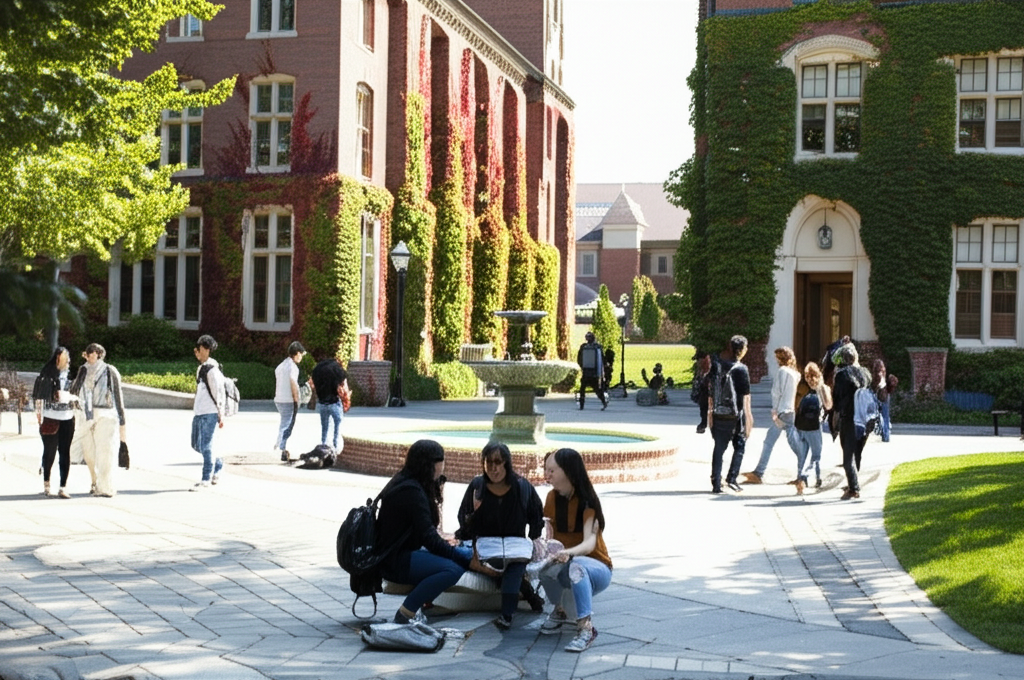Complete Guide to US Student Visa (F-1) Application in 2025

Complete Guide to US Student Visa (F-1) Application in 2025

The journey to studying in the United States begins with understanding the F-1 visa process
Introduction: Studying in the United States
The United States hosts over one million international students annually, offering world-class education across thousands of colleges and universities. The F-1 student visa is the primary visa category that allows international students to pursue academic studies in the US. This comprehensive guide walks you through the entire application process, from understanding eligibility requirements to maintaining your status while studying.
With recent updates to immigration policies and procedures in 2025, it's more important than ever to understand the nuances of the F-1 visa application process. This guide incorporates the latest changes and provides actionable advice to maximize your chances of approval.
F-1 Visa Eligibility Requirements
To qualify for an F-1 student visa, you must meet the following criteria:
Academic Requirements
- Acceptance Letter: You must be accepted by a SEVP (Student and Exchange Visitor Program) certified school
- Full-Time Enrollment: You must plan to enroll in a full course of study
- Academic Preparation: You must have sufficient academic preparation for your chosen program
- English Proficiency: You must demonstrate adequate English language skills (typically through TOEFL, IELTS, or Duolingo English Test)
Financial & Immigration Requirements
- Financial Support: You must prove you have sufficient funds to cover tuition and living expenses for at least the first year
- Ties to Home Country: You must demonstrate strong ties to your home country and intent to return after completing your studies
- No Immigrant Intent: You must not intend to immigrate permanently to the US
- Valid Passport: Your passport must be valid for at least six months beyond your intended period of stay
The F-1 Visa Application Process: Step by Step

The F-1 visa application involves multiple steps and careful preparation
-
Get Accepted to a SEVP-Certified School
Apply to and receive acceptance from a school certified by the Student and Exchange Visitor Program (SEVP).
-
Receive Form I-20
After acceptance, your school will issue Form I-20 (Certificate of Eligibility for Nonimmigrant Student Status) after you provide proof of financial resources.
-
Pay the SEVIS Fee
Pay the I-901 SEVIS fee ($350 for F-1 students) online at the SEVP website.
-
Complete the DS-160 Form
Fill out the Online Nonimmigrant Visa Application (Form DS-160) on the U.S. Department of State website.
-
Pay the Visa Application Fee
Pay the non-refundable visa application fee ($185 for F-1 visas as of 2025).
-
Schedule a Visa Interview
Schedule an interview at the U.S. Embassy or Consulate in your home country. Wait times vary by location and season.
-
Prepare for the Interview
Gather all required documents and prepare for common interview questions.
-
Attend the Visa Interview
Arrive early with all your documentation. Be concise, honest, and confident in your responses.
-
Wait for Visa Processing
If approved, your passport with the F-1 visa will typically be returned within a few days to weeks, depending on your location.
-
Prepare for Travel to the US
You can enter the US up to 30 days before your program start date as indicated on your I-20.
Essential Documents for Your F-1 Visa Application
Prepare the following documents for your visa interview:
Primary Documents
- Valid passport (valid for at least 6 months beyond your intended stay)
- Form DS-160 confirmation page
- Visa application fee payment receipt
- SEVIS fee payment receipt
- Form I-20 signed by you and your school official
- One 2x2 inch (5x5 cm) photograph (if not uploaded with DS-160)
Financial Documents
- Bank statements (past 3-6 months)
- Scholarship/financial aid letters
- Sponsor's affidavit of support (if applicable)
- Income tax returns or employment verification of sponsors
- Any additional proof of financial solvency
Supporting Documents
- Academic transcripts and diplomas/degrees
- Standardized test scores (TOEFL, IELTS, SAT, GRE, GMAT, etc.)
- University acceptance letter
- Resume/CV highlighting academic and professional achievements
- Evidence of ties to your home country
- Explanation of study plans and career goals
Important Note: Requirements may vary slightly by embassy or consulate. Always check the specific requirements of the U.S. Embassy or Consulate where you'll apply.
Demonstrating Financial Capability
One of the most critical aspects of your F-1 visa application is proving you have sufficient funds to cover your educational and living expenses. Here's what you need to know:
| Expense Category | What to Include | Documentation Required |
|---|---|---|
| Tuition and Fees | Full annual cost as listed on your I-20 | Bank statements, scholarship letters, loan approval documents |
| Living Expenses | Housing, food, transportation, personal expenses | Bank statements showing sufficient funds for at least one year |
| Health Insurance | Coverage for medical expenses in the US | Insurance policy or statement of intent to purchase |
| Books and Supplies | Academic materials, computer, etc. | Included in overall financial documentation |
Pro Tip: Financial documents should be recent (less than 3 months old) and clearly show the account holder's name, bank's name, and sufficient funds. If using a sponsor, include a signed affidavit of support and documentation of their relationship to you.
Preparing for the Visa Interview
The visa interview is often the most crucial part of your application process. Here's how to prepare:

The visa interview typically lasts only 3-5 minutes, so making a good impression quickly is essential
Common Interview Questions
- Why did you choose this university? Discuss specific programs, faculty, research opportunities, or rankings
- Why did you choose this field of study? Connect it to your academic background and career goals
- How will you use your education when you return home? Explain specific career plans in your home country
- How will you finance your studies? Clearly explain your funding sources
- What ties do you have to your home country? Mention family, property, job offers, or other connections
- Do you have relatives in the United States? Be honest about any family connections
Interview Tips
- Dress professionally to make a good impression
- Practice your responses but don't memorize scripts
- Be concise - most interviews last only 3-5 minutes
- Speak confidently in English
- Be honest - never lie or provide misleading information
- Bring organized documentation in a folder for easy access
- Demonstrate clear intent to return to your home country after studies
- Know your program details including courses, duration, and career relevance
After Visa Approval: Preparing for Your Journey
Once your F-1 visa is approved, take these steps to prepare for your journey to the United States:
Pre-Departure Checklist
- Review your I-20 for accuracy
- Book your flight (you can enter the US up to 30 days before your program start date)
- Arrange housing if not provided by your institution
- Purchase health insurance
- Research and prepare for orientation programs
- Notify your bank about your travel plans
- Make copies of all important documents
- Research cultural norms and weather at your destination
Documents for Port of Entry
- Valid passport with F-1 visa
- Original I-20 form (signed)
- SEVIS fee payment receipt
- Admission letter from your school
- Financial documents
- Contact information for your school's international student office
- Address where you'll be staying in the US
Keep these documents in your carry-on luggage, not checked baggage.
Maintaining F-1 Status While in the US
Once in the United States, you must maintain your F-1 status by following these requirements:
Academic Requirements
- Maintain a full course load (typically 12 credits for undergraduates, 9 for graduates)
- Make normal academic progress toward your degree
- Obtain proper authorization before dropping below full-time
- Attend the school on your I-20
- Maintain good academic standing
Employment Restrictions
- Limited to on-campus employment during the first academic year
- May work up to 20 hours per week while school is in session
- May work full-time during official school breaks
- Must obtain authorization for off-campus employment (CPT, OPT)
- Never work without proper authorization
Reporting Requirements
- Report any change of address within 10 days
- Report any legal name changes
- Report any changes in major or academic level
- Maintain valid I-20 (request extension if needed)
- Keep passport valid at least 6 months into the future
Warning: Failing to maintain your F-1 status can result in termination of your SEVIS record, loss of benefits like CPT/OPT, and potential difficulties obtaining visas in the future. Always consult with your Designated School Official (DSO) before making any decisions that might affect your status.
Employment Options for F-1 Students
F-1 students have several employment options available during and after their studies:
During Your Program
- On-Campus Employment: Work up to 20 hours per week while school is in session and full-time during breaks
- Curricular Practical Training (CPT): Off-campus employment that is an integral part of your curriculum, such as internships or cooperative education programs
- Severe Economic Hardship: If you experience unforeseen economic hardship, you may apply for special work authorization after completing one academic year
- International Organizations: Work for recognized international organizations
After Completion
- Optional Practical Training (OPT): Work authorization for 12 months in a position directly related to your field of study
- STEM OPT Extension: Additional 24 months of work authorization for students in Science, Technology, Engineering, and Mathematics fields
- Cap-Gap Extension: Extension of status and work authorization for F-1 students with pending H-1B applications
- Changing to Another Visa Status: Options to transition to work visas like H-1B, O-1, or other categories
Common Challenges and How to Address Them
Visa Denials
If your visa application is denied, the consular officer will provide a reason. Common reasons include:
- Insufficient financial documentation
- Weak ties to home country
- Inconsistencies in your application or interview
- Inadequate English proficiency
You can reapply after addressing the specific concerns. There is no waiting period required, but you must pay the application fee again and provide new, compelling evidence to overcome the previous denial.
Administrative Processing
Some applications require additional background checks, known as "administrative processing" (221(g)).
- This is not a denial but a delay for further review
- Processing typically takes 2-8 weeks but can be longer
- Follow the embassy's instructions for checking your status
- Notify your school's international office about the delay
Be patient and avoid making multiple inquiries, which won't expedite the process.
Conclusion: Your Path to Studying in the US
Obtaining an F-1 student visa requires careful preparation and attention to detail, but the opportunity to study in the United States can be life-changing. By understanding the application process, preparing thoroughly for your visa interview, and maintaining your status while in the US, you can focus on your academic goals and make the most of your American education experience.

International students contribute to the diverse and vibrant academic communities across the United States
Key Takeaways
- Start the application process early, ideally 4-6 months before your program begins
- Prepare comprehensive financial documentation showing sufficient funds for at least one year
- Develop a clear explanation of your study plans and how they relate to your career goals
- Demonstrate strong ties to your home country and intent to return after completing your studies
- Practice for your visa interview with concise, confident responses
- Understand and follow all requirements to maintain your F-1 status while in the US
- Consult with your school's international student office for guidance throughout your academic journey
Need Help With Your Student Visa Documents?
Our document generation tools can help you create professional documents for your F-1 visa application.
Generate Bank Statements Create Invitation LettersLast updated: January 25, 2025 | This guide reflects the most current US visa policies and procedures for international students.
Need Help With Your Visa Documents?
Our document generation tools can help you create professional visa application documents quickly and accurately.